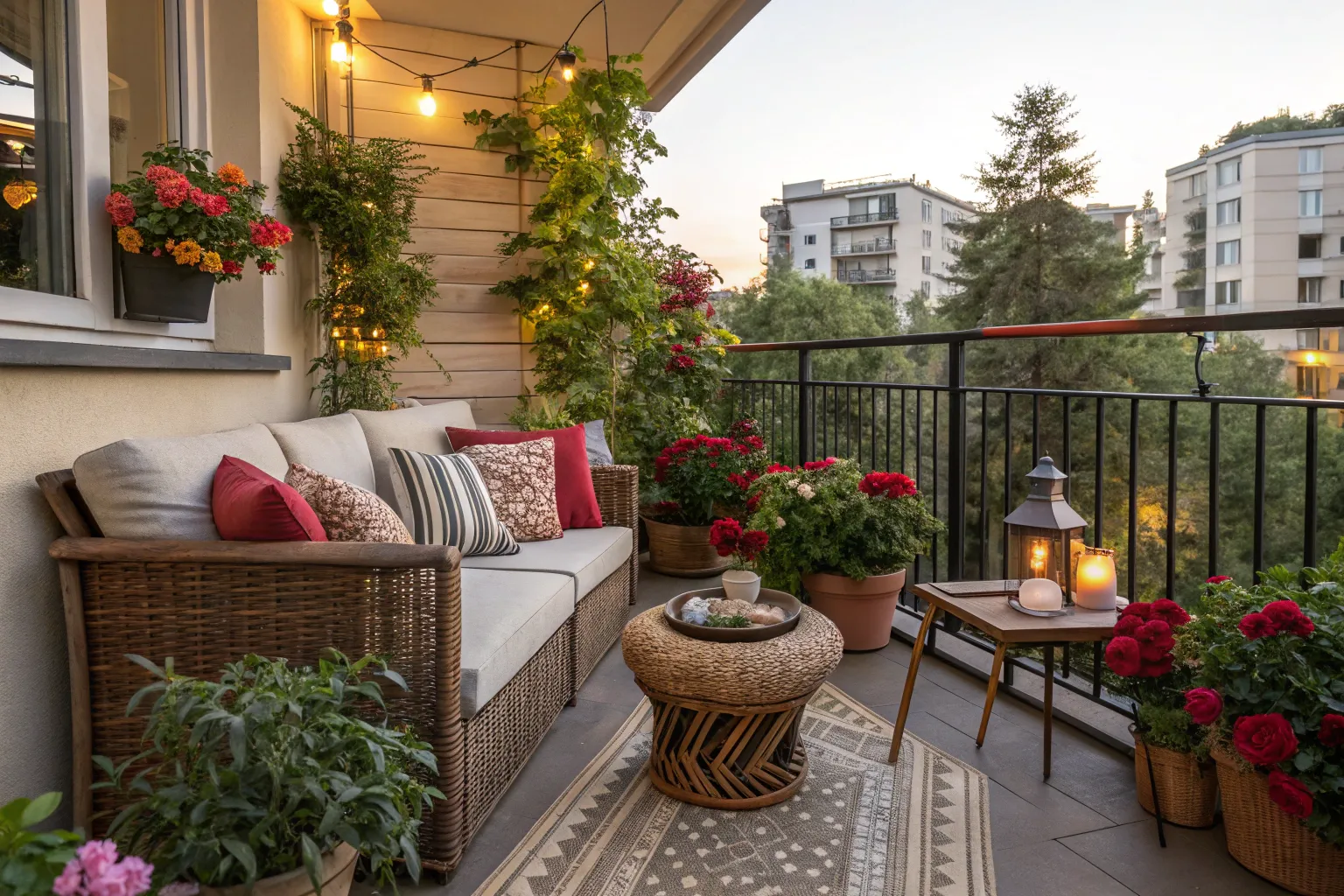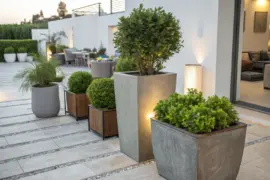A well-designed balcony functions as a meaningful extension of your living space—a place where the boundaries between interior comfort and outdoor environment blur intentionally. The most successful balcony transformations don’t rely on elaborate installations or extensive budgets, but rather on informed choices about three fundamental elements: furniture that withstands exposure, plants adapted to microclimatic conditions, and textiles engineered for outdoor performance.
Understanding Your Balcony’s Microclimate
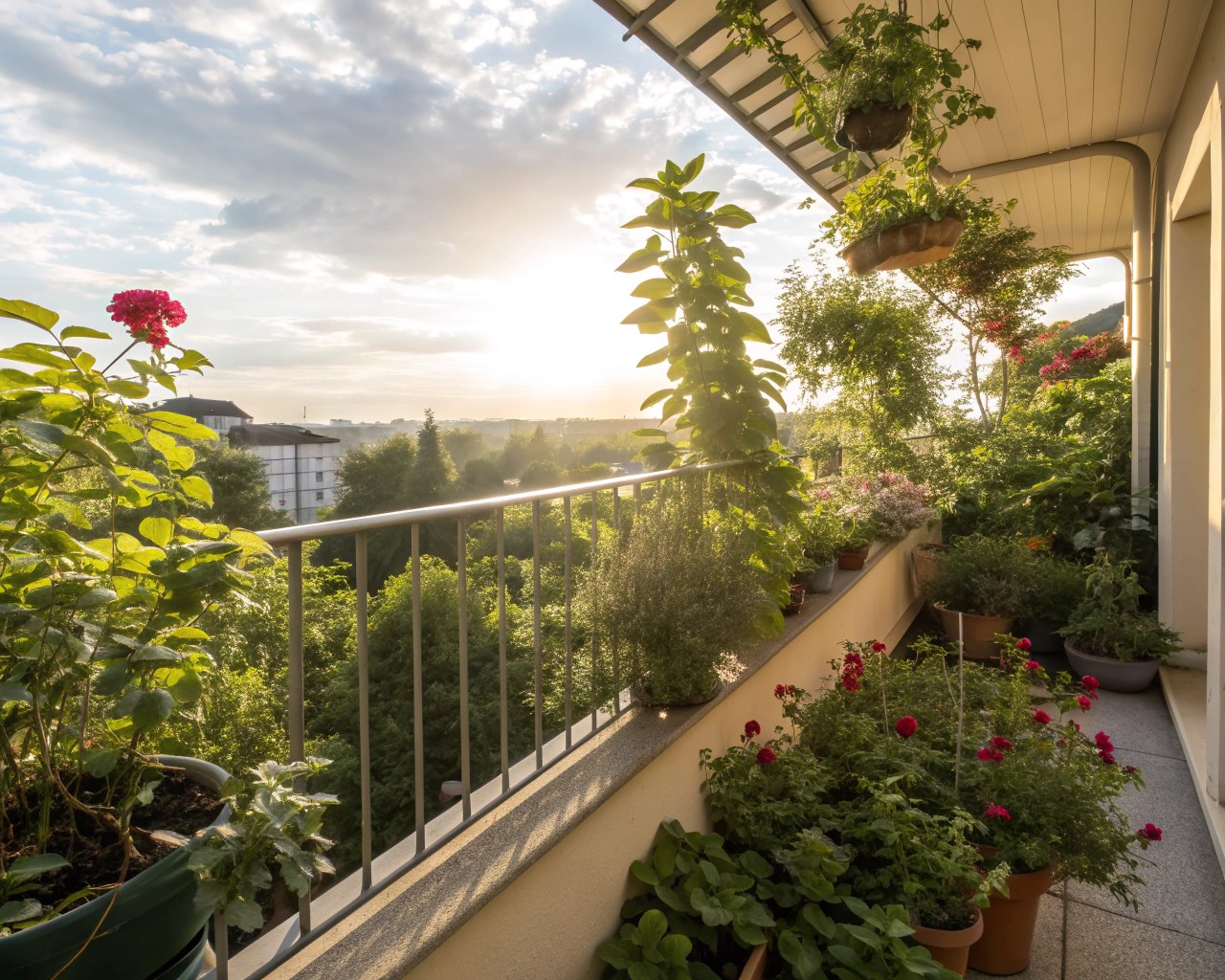
Before selecting a single piece of furniture or plant, assess the environmental conditions that define your space. Microclimates on balconies differ dramatically from ground-level gardens due to increased wind exposure, variable sun patterns, and the radiative heat from surrounding surfaces.
Sun exposure patterns shift throughout the day and across seasons. A balcony receiving morning eastern light creates different growing conditions than one baking in western afternoon sun. Track sunlight duration for at least one week—most flowering plants and vegetables require six to eight hours of direct light, while shade-tolerant species like hostas, ferns, and certain lettuces thrive with less.
Wind dynamics intensify with height. High-rise balconies experience stronger, more persistent airflow that desiccates soil rapidly and can physically damage plants. Observe wind patterns using simple ribbon flags attached temporarily to railings. Breezes exceeding 5 mph reduce the cooling effect of shade by 15-20%. Wind-tolerant plants include succulents, ornamental grasses, rosemary, thyme, and low-growing vegetables like lettuce and radishes.
Temperature fluctuations on balconies often exceed those at ground level. Concrete and metal surfaces absorb and radiate heat, creating localized warmth that can shift your effective growing zone upward by half a zone or more. Conversely, exposed balconies without thermal mass from adjacent walls may experience colder minimum temperatures.
Structural Considerations: Weight Capacity
Understanding load limits prevents both safety hazards and structural damage. Residential balconies in buildings four stories or higher typically support 100 pounds per square foot (psf), while smaller buildings (three stories or less) are designed for 40 psf. This includes everything: furniture, planters, soil, water, people, and accumulated snow.
To calculate your actual load, remember that wet soil weighs approximately 100 pounds per cubic foot. A standard 24-inch diameter planter filled with saturated growing medium adds 50-75 pounds. Multiple large containers, heavy furniture, and several people quickly approach or exceed capacity.
Practical weight management strategies:
- Position heavier items near load-bearing walls or structural supports rather than at balcony edges
- Use lightweight container materials—plastic, fiberglass, or fabric grow bags instead of ceramic or concrete
- Incorporate drainage cells or lightweight aggregate like perlite or pumice in potting mixes to reduce weight while improving drainage
- Distribute weight evenly across the surface area rather than concentrating mass in one zone
Furniture That Performs
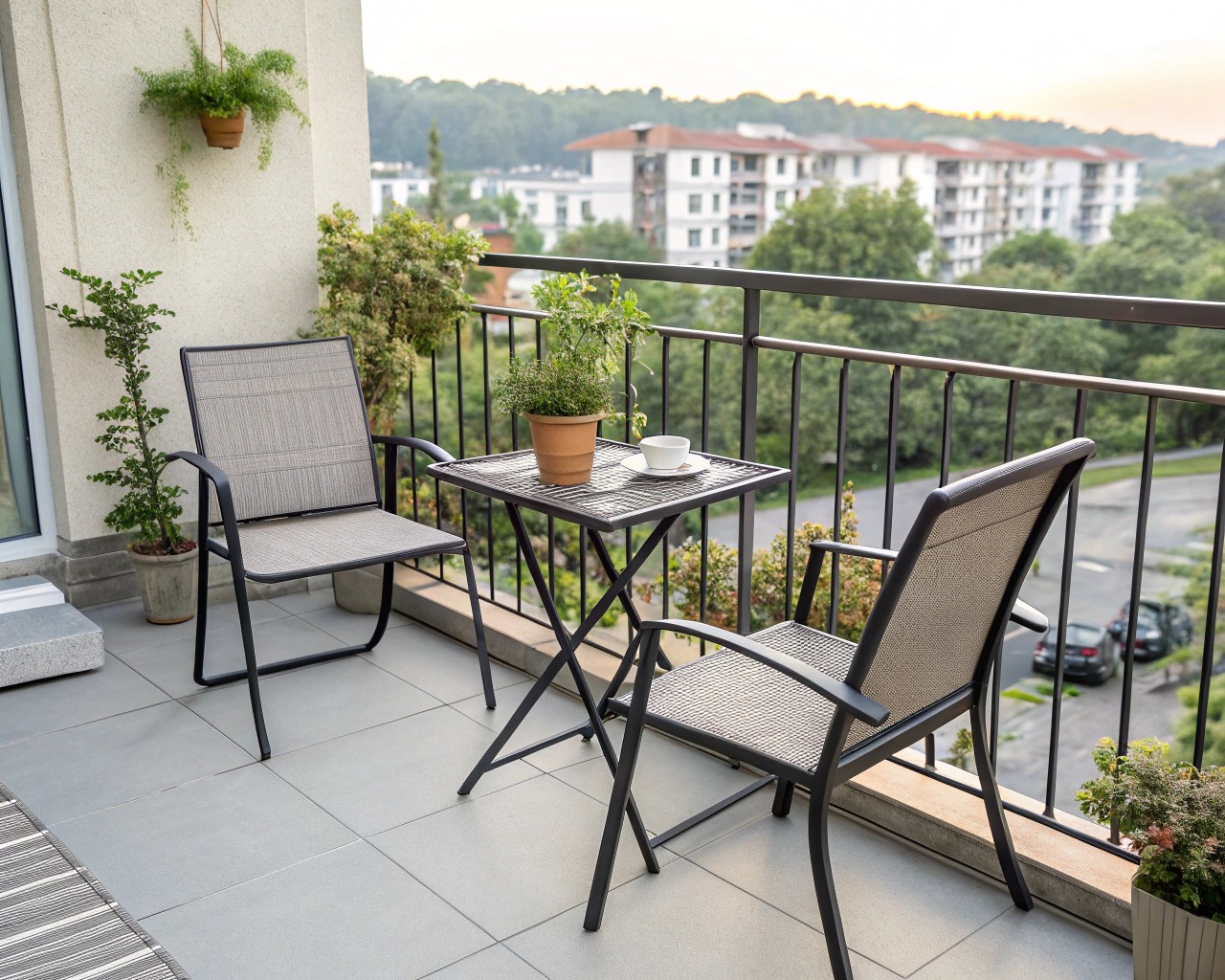
Balcony furniture must balance aesthetic appeal with functional durability. The material you select determines maintenance requirements, longevity, and comfort throughout shifting seasons.
Material Selection
Metal furniture offers exceptional durability with specific considerations for each type:
Aluminum resists rust naturally, weighs less than other metals (facilitating rearrangement), and handles poolside moisture effectively. Powder-coated finishes provide additional weather protection and expanded color options. However, metal absorbs heat—direct sun exposure can make surfaces uncomfortably hot without cushions.
Wrought iron delivers classic aesthetic appeal and substantial weight that resists wind displacement. It requires protective coatings to prevent rust and performs best in covered areas or climates with minimal precipitation.
Stainless steel provides superior corrosion resistance with a modern, sleek appearance but carries a higher price point and retains heat significantly in direct sunlight.
Wood furniture contributes warmth and natural texture to outdoor spaces:
Teak stands as the premium choice for outdoor applications due to exceptional weather resistance, natural oils that repel moisture, and the ability to withstand decades of exposure with minimal maintenance beyond occasional cleaning.
Cedar offers natural insect-repellent properties, a distinctive aromatic quality, and moderate weather resistance at a more accessible price point than teak.
Eucalyptus and robinia provide hardwood durability with sustainability credentials, though they require regular sealing and oiling to maintain appearance and structural integrity.
All wood furniture benefits from annual application of protective oil or sealant. Without treatment, wood weathers to silver-gray patina—acceptable to some, undesirable to others.
Synthetic materials maximize low-maintenance performance:
All-weather wicker (polyethylene resin woven over aluminum frames) combines traditional aesthetic with modern durability. It resists fading, moisture damage, and temperature extremes.
Recycled plastic offers sustainability benefits, requires essentially no maintenance, and withstands continuous exposure without degradation.
Scale and Configuration
Furniture scale determines whether a balcony feels spacious or cramped. For standard balconies (4-6 feet deep by 6-10 feet wide), choose pieces proportionate to the footprint:
- Bistro sets (small round table with two chairs) fit 24-36 square foot spaces
- Loveseat or compact two-seat sofa with accent table suits 40-60 square foot balconies
- Full conversation sets with four seats require 80+ square feet
Space-planning dimensions:
- Allow 30-48 inches for primary walkways and high-traffic zones
- Reduce to 24 inches minimum for secondary paths
- Leave 36 inches behind dining chairs for comfortable ingress/egress
- Position longest pieces along longest walls to maximize perceived space
- Direct traffic flow around primary seating zones rather than through them
Multi-functional and modular furniture maximizes flexibility:
- Storage benches provide seating while housing cushions, gardening supplies, or seasonal décor
- Nesting tables adjust to accommodate varying numbers of guests
- Folding chairs store compactly when not needed
- Modular sectional pieces rearrange for different activities
| Balcony Size | Recommended Furniture | Capacity |
|---|---|---|
| 24-40 sq ft | Bistro set or 2 folding chairs + side table | 2 people |
| 40-60 sq ft | Loveseat + accent table or 3-4 stacking chairs | 3-4 people |
| 60-100 sq ft | Compact conversation set or small dining table | 4-6 people |
Plant Selection for Container Success

Container gardening on balconies demands different considerations than in-ground cultivation. Root restriction, rapid moisture fluctuation, and exposure extremes require adapted plant choices and container strategies.
Container Specifications
Material impacts plant health significantly:
Plastic, composite, and resin containers weigh less than alternatives—critical for balcony weight limits—and retain moisture longer than porous materials. They resist cracking in freeze-thaw cycles and cost less initially.
Terracotta and unglazed ceramic pots breathe through porous walls, providing excellent drainage for succulents and Mediterranean herbs prone to root rot. However, they dry rapidly, requiring more frequent irrigation, and add substantial weight when filled.
Fabric grow bags offer optimal aeration to root zones, preventing circling roots common in rigid containers. They’re lightweight, inexpensive, and collapse for storage but may not suit formal aesthetic preferences.
Size determines success. Vegetables with extensive root systems (tomatoes, peppers, eggplants) require minimum five-gallon containers; ten-gallon volumes produce better results. Shallow-rooted crops (lettuce, radishes, herbs) perform adequately in one-to-two-gallon containers. The general principle: larger containers require less frequent watering and fertilizing, buffer temperature extremes, and support healthier plants.
Drainage prevents failure. Every container must have adequate drainage holes. Waterlogged soil suffocates roots, creating anaerobic conditions that promote root rot and pathogenic fungi. For containers exceeding 10 inches depth, add a 2-3 inch base layer of coarse drainage material (marble chips, pumice, or perlite) separated from growing medium by landscape fabric.
Growing Medium Composition
Never use standard garden soil in containers—it compacts, drains poorly, and lacks the structure needed for containerized roots. Commercial potting mixes formulated for containers provide appropriate drainage, aeration, and water retention.
Professional-grade potting soil recipes typically contain:
- 50% composted pine or fir bark (structure and drainage)
- 20% peat moss or coconut coir (moisture retention)
- 15% perlite or vermiculite (aeration and drainage)
- 15% compost or soil conditioner (nutrients and microbial activity)
For balconies with weight concerns, substitute lightweight components like perlite (volcanic glass expanded by heat) or coconut coir for heavier materials. Premium substrates enhanced with these amendments improve both drainage and aeration while reducing overall weight.
High-Performance Plant Selections
Flowering annuals for continuous color:
Geraniums (Pelargonium × hortorum) produce abundant blooms in red, orange, pink, or white from spring through frost. They grow 12-24 inches tall, tolerate full to partial sun, and thrive in USDA zones 10-11 (grown as annuals elsewhere).
Petunias (Petunia × hybrida) offer hundreds of cultivars in virtually every color combination imaginable. They perform in full sun to partial shade, grow 6-18 inches tall, and bloom continuously with regular deadheading.
Lantana (Lantana camara) withstands heat, drought, and wind while attracting pollinators. Available in compact or trailing forms, it blooms spring through frost in zones 7-11.
Perennials and shrubs for structure:
Hydrangeas (compact cultivars of H. paniculata and H. arborescens) provide substantial presence in large containers. Choose varieties that bloom on new and old wood for reliable flowering. They thrive in zones 3-9 with appropriate winter protection.
Boxwood (Buxus spp.) dwarf cultivars, particularly littleleaf varieties, create formal structure year-round. They tolerate partial sun and zones 5-9.
Dwarf Japanese cedar (Cryptomeria japonica ‘Globosa Nana’) adds evergreen interest with blue-green foliage and compact rounded form reaching 4-5 feet. Suitable for zones 5-9.
Edible crops for balcony harvest:
Cherry tomatoes produce abundantly on smaller plants well-suited to five-gallon containers. Varieties like ‘Patio Princess’ and ‘Little Sun Yellow’ are bred specifically for container culture.
Peppers—both sweet and hot varieties—thrive in containers with full sun (minimum six hours daily) and consistent moisture. They’re heavy feeders requiring fertilization every two weeks.
Herbs (basil, rosemary, thyme, mint, sage) adapt readily to container culture. Most require well-draining soil and benefit from terracotta pots that wick excess moisture. Mint, catnip, and yarrow spread aggressively if planted in ground but remain contained in pots.
Leaf lettuces grow quickly, tolerate partial shade, and allow succession planting for extended harvest. Varieties like ‘Green Salad Bowl’ handle summer heat better than others.
Native plants for low maintenance:
Native species adapted to your regional conditions often perform better than exotic alternatives, requiring less intervention once established:
- Aquilegia canadensis (red columbine)
- Coreopsis lanceolata (lanceleaf tickseed)
- Carex spp. (sedges—hundreds of species provide structural interest)
- Symphyotrichum spp. (asters in multiple colors)
- Monarda punctata (spotted beebalm)
Vertical Growing Strategies
When horizontal space constrains planting capacity, utilize vertical dimensions through trellis installations and climbing plants.
Trellis options include:
- Bamboo frames secured with cable ties—economical and effective for beans, peas, and cucumbers
- Metal geometric patterns attached to walls or railings for ornamental climbers
- Cedar grid panels that double as privacy screens while supporting vining vegetables
- Prefabricated obelisks and A-frame structures for focal point plantings
Climbing edibles:
- Pole beans and peas
- Cucumbers (especially compact varieties like ‘Spacemaster’)
- Small-fruited tomatoes
- Malabar spinach
Ornamental climbers:
- Morning glories
- Sweet peas
- Clematis
- Annual vines (black-eyed Susan vine, cardinal climber)
Textiles Engineered for Outdoor Exposure
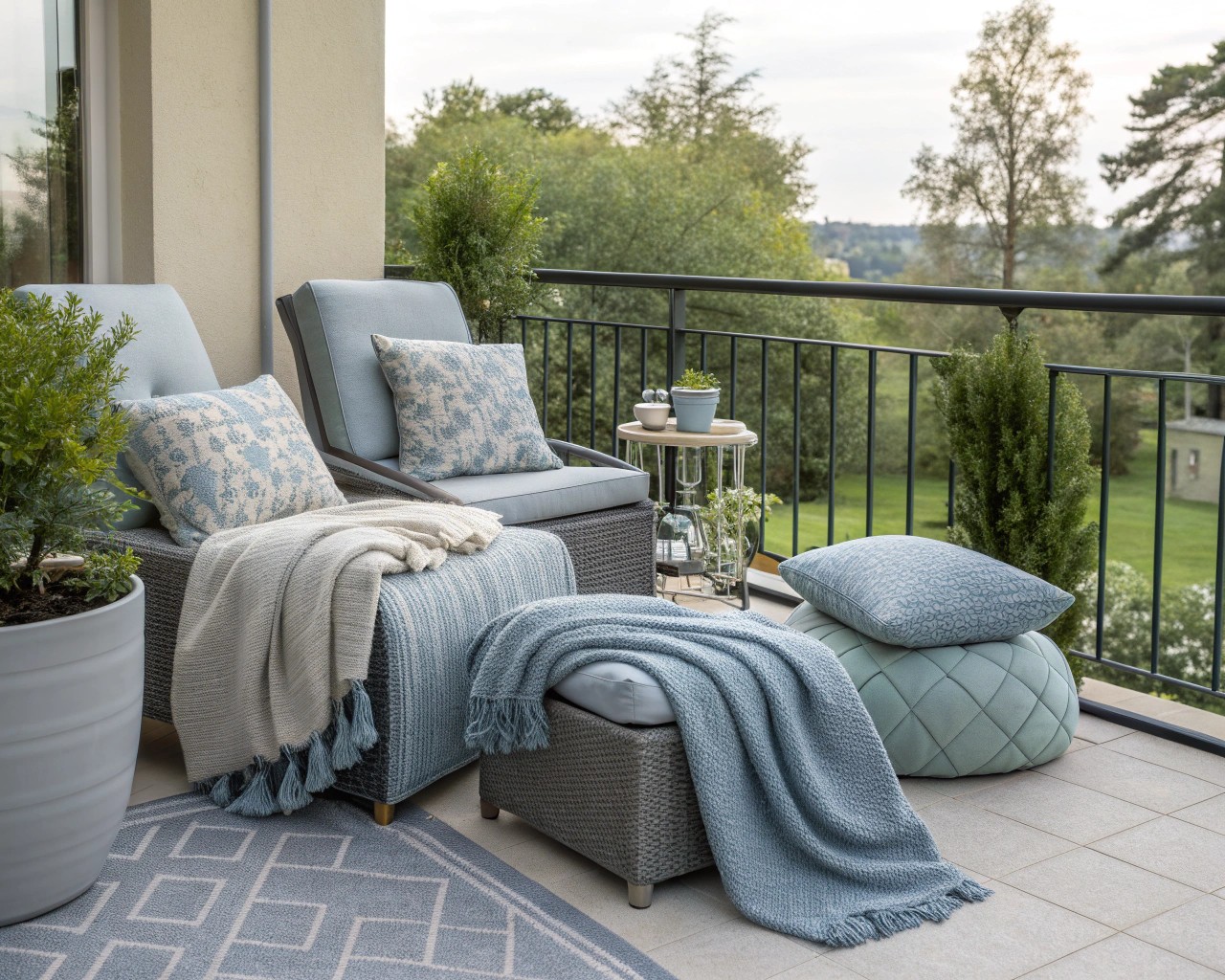
Outdoor textiles must resist degradation from UV radiation, moisture, temperature extremes, and biological agents (mold, mildew) while maintaining aesthetic appeal and comfort.
Performance Fabric Technologies
Solution-dyed acrylic represents the gold standard for outdoor upholstery. Unlike piece-dyed fabrics where color is applied to woven fabric, solution-dyeing incorporates pigment into the acrylic fiber before extrusion. This renders the fabric UV-resistant, fade-proof, and capable of withstanding bleach cleaning without color loss.
Leading manufacturers (Sunbrella, Perennials) produce 100% solution-dyed acrylic fabrics resistant to stains, mildew, and fading. These materials typically carry five-year limited warranties covering structural degradation and color fastness.
Polyester offers versatility and durability at various price points. It resists stretching, abrasion, mold, and rot while remaining lightweight and flexible. Solution-dyed polyester provides exceptional UV resistance. Vinyl-backed polyester adds waterproofing for applications like cushion covers and awnings.
Nylon delivers superior abrasion resistance—the reason it’s specified for military and commercial applications. It dries quickly and repels water effectively when treated with durable water repellent (DWR) coating. However, it requires solution-dyeing for UV resistance; undyed or conventionally dyed nylon degrades rapidly in sunlight.
Maintenance Protocols
Proper care extends textile lifespan significantly. Most outdoor fabrics tolerate aggressive cleaning that would damage interior textiles.
Routine maintenance (weekly to monthly):
- Remove loose debris with dry brush or vacuum before embedding occurs
- Spot-clean fresh stains immediately—blot rather than rub to prevent spreading
- Mix ¼ cup mild dish soap per gallon warm water
- Apply solution with soft cloth or sponge, working gently
- Rinse thoroughly with clean water
- Air-dry completely before storage—stand cushions on edge with zippers open for optimal drainage
Deep cleaning (seasonally or as needed):
For embedded dirt and general restoration:
- Prepare soap solution (¼ cup soap per gallon water)
- Scrub fabric with soft-bristle brush
- Rinse thoroughly
- Air-dry completely
For mold and mildew:
- Soak affected areas in 1:20 bleach-to-water solution
- Wash with diluted dish soap
- Rinse thoroughly (power washing at 1200 PSI held 30 inches away effectively removes spores)
- Dry completely
Critical: Never machine-wash outdoor cushions or use pressures exceeding 1200 PSI. Excessive mechanical action damages internal batting and foam cores. Do not use dryers—heat degrades foam inserts and may shrink covers.
Fabric protection applications create hydrophobic barriers that repel water and inhibit mold growth. Apply annually to clean, dry fabrics or after deep cleaning.
Color Schemes and Aesthetic Coordination
Textile color selection impacts both visual appeal and practical performance. Lighter colors reflect heat, maintaining cooler surface temperatures, but show soil more readily. Darker tones conceal staining but absorb solar radiation.
Neutral palettes (whites, grays, beiges, taupes) create sophisticated, timeless foundations that adapt easily to seasonal accent changes. They work particularly well in small spaces, creating visual continuity that makes areas feel larger.
Earthy and natural tones (olive greens, terracotta, soft browns) complement plants and natural materials, establishing biophilic connections to organic elements.
Monochromatic schemes using various shades and tints within a single color family achieve elegant cohesion through textural variation rather than color contrast.
Consider pairing neutral-toned permanent furniture with cushions, throw pillows, and accent textiles that rotate seasonally, allowing color refreshment without replacing foundational pieces.
Creating Functional Zones
Successful balcony design establishes clear purpose zones even within compact footprints. This organizational strategy improves both function and visual appeal.
Conversation Zone
Arrange seating to facilitate comfortable interaction—conversation distances of 4-8 feet prevent strain. Face seating toward a focal point (view, plant collection, or decorative element) rather than directly at each other, which can feel confrontational. Include side tables within arm’s reach of each seat for beverages and reading materials.
Dining Zone
For dedicated dining areas, ensure:
- 36 inches clearance behind pulled-out chairs
- Table positioned to maximize view or most pleasant orientation
- Table size proportionate to balcony—bistro tables (24-30 inches diameter) suit compact spaces; 40-48 inch rounds or rectangles accommodate four people
Relaxation Zone
Single chaise lounge or recliner positioned for optimal sun exposure (or shade, depending on preference) with small side table for beverages, books, and sunscreen. Orient to capitalize on view or privacy depending on priorities.
Lighting Layers
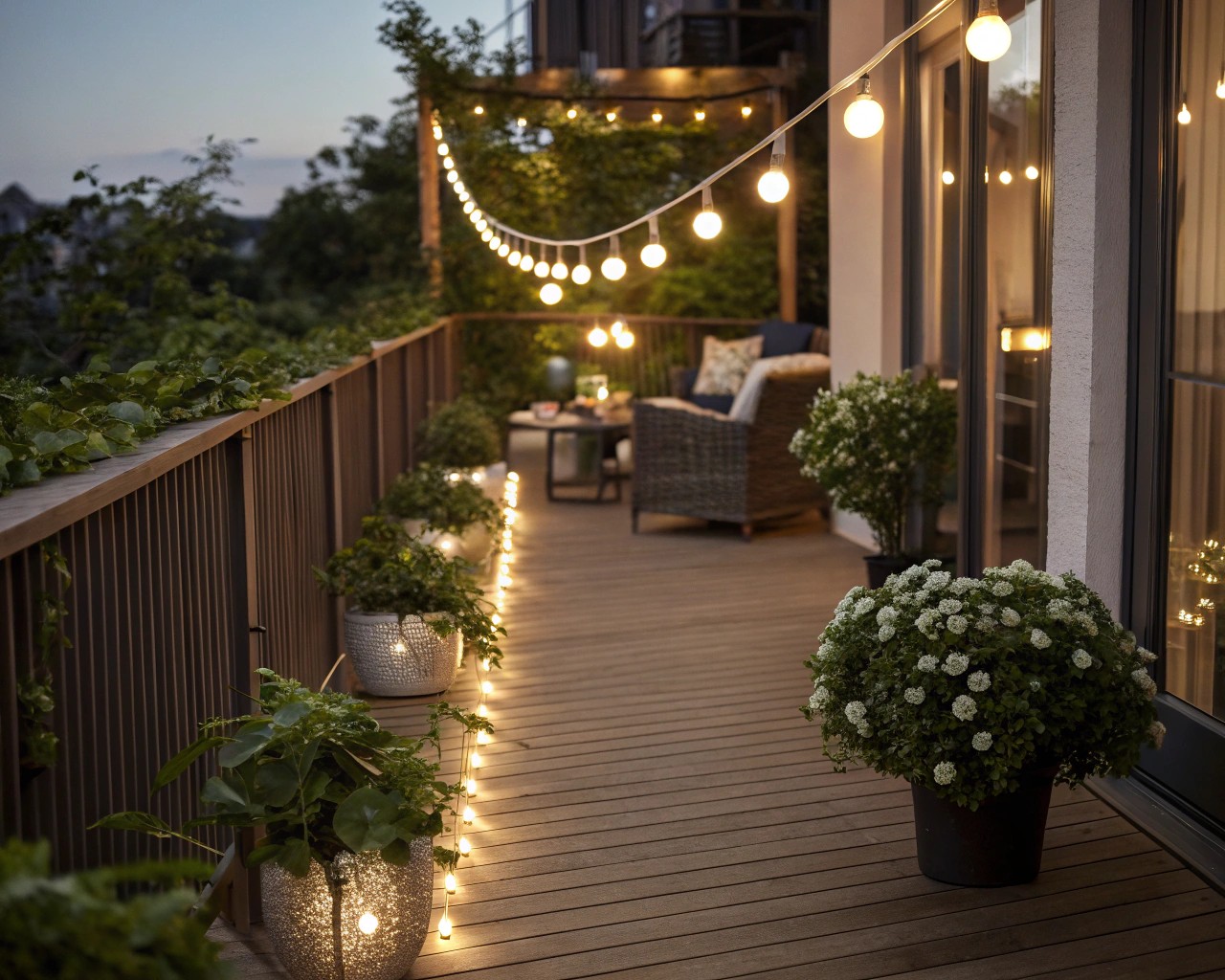
Thoughtful lighting extends balcony usability into evening hours while creating ambiance impossible during daylight.
String lights remain the most versatile solution, adaptable to various configurations:
Pattern options:
– Perimeter stringing along railings creates boundary definition
– Crisscross (X) patterns at 45-degree angles soften rectilinear spaces
– V-patterns work in irregular spaces but concentrate stress on apex anchor point
Choose LED bulbs for energy efficiency and longevity. Commercial-grade string lights with weatherproof sockets withstand year-round exposure better than residential-grade options.
Solar-powered lights eliminate wiring requirements and reduce energy consumption. Position solar panels in locations receiving maximum sun exposure (panels can be separated from lights and placed optimally).
Portable lighting (lanterns, flameless candles) provides flexibility and requires no installation. This is particularly valuable for rental situations or where permanent fixtures aren’t permitted.
Privacy Solutions
Urban balconies often lack privacy, diminishing comfort and usability. Multiple strategies address this concern without permanent modification.
Privacy screens attach directly to railings or glass panels via clips or ties. Available in various materials (mesh, bamboo, fabric) and opacity levels, they’re removable for cleaning or relocation.
Tall planters with screening plants create living privacy barriers. Bamboo, ornamental grasses, canna lilies, and elephant ears grow tall enough to block sightlines while remaining containerized.
Sheer outdoor curtains hung from tension rods provide romantic, adjustable privacy on balconies with side walls. They move with breezes, softening the space visually while obscuring views when desired.
Trellis panels with climbing plants deliver privacy that intensifies as plants mature. Options include clematis, jasmine, annual vines, and even vining vegetables like beans or cucumbers.
Seasonal Transitions
Rather than complete overhauls, successful seasonal adaptation rotates three to five key elements while maintaining foundational pieces year-round.
Foundational elements (remain constant):
- Primary furniture in neutral tones
- Basic planter boxes and containers
- Permanent lighting infrastructure
- Weatherproof rugs in natural colors
Rotating seasonal elements:
Spring: Lightweight cotton or linen throws; pastel cushions; early-blooming bulbs (crocuses, daffodils, tulips); fresh green foliage plants
Summer: Bright-colored accent pillows; flowering annuals at peak performance; lightweight fabrics; increased shade elements
Fall: Warm-toned textiles (rust, burgundy, gold); ornamental cabbages and mums; decorative gourds; cozy throws for cooler evenings
Winter: Heavy cushion storage to prevent moisture damage; evergreens in containers; cold-hardy pansies; string lights for extended darkness hours
Storage solutions for off-season items include:
- Waterproof storage benches that double as seating
- Indoor closet space for cushions and delicate items
- Vacuum-sealed bags to minimize volume
- Covered outdoor cabinets for items too bulky for interior storage
Maintenance Rhythms
Consistent maintenance prevents small issues from becoming major problems while extending the useful life of all balcony elements.
Weekly tasks:
- Water plants according to needs (daily during peak heat)
- Remove debris from surfaces and furniture
- Spot-clean fresh stains on textiles
- Deadhead flowers to promote continued blooming
Monthly tasks:
- Inspect furniture for loose fasteners, rust spots, or structural concerns
- Fertilize containerized plants (most require feeding every 2-4 weeks during active growth)
- Deep-clean one furniture piece or set
- Assess plant health and address pest or disease issues promptly
Seasonal tasks:
- Spring: Thorough cleaning after winter; structural inspection; refresh growing medium in perennial containers; apply protective coatings to wood furniture
- Summer: Monitor irrigation frequency; shade provision during heat waves; fertilization of heavy feeders
- Fall: Harvest vegetables; plant spring bulbs; prepare tender plants for overwintering; clean and store cushions
- Winter: Move frost-tender containers to protected locations; cover or store furniture in harsh-winter climates; monitor moisture to prevent complete desiccation
Balcony Rug Selection
Outdoor rugs define zones, add comfort underfoot, and introduce color or pattern without commitment.
Material considerations:
Polypropylene and polyester dominate outdoor rug manufacturing due to weather resistance, mildew resistance, UV stability, and ease of cleaning. These synthetic fibers withstand rain, snow, and prolonged sun exposure without degradation.
Plastic straw weave creates lightweight, reversible rugs ideal for temporary placement. They rinse clean with a hose and fold compactly for storage.
Size and placement:
- Rugs should extend beyond furniture groupings by 18-24 inches on all sides when possible
- In constrained spaces, place front furniture legs on rug with rear legs off
- Ensure rugs don’t create tripping hazards where they meet flooring transitions
- Secure lightweight rugs with rug tape or non-slip pads in windy locations
Practical Implementation Tips
Start with structure: Assess microclimatic conditions, weight capacity, and spatial dimensions before purchasing anything. Measure carefully and create a scale drawing showing existing features (doors, railings, outlets).
Invest strategically: Allocate budget to foundational pieces—quality furniture and properly sized containers—that provide long-term value. Economize on accessories and accent pieces easily refreshed.
Test before committing: Purchase one or two plant varieties before filling your entire balcony. Observe their performance for one full growing season. Different balconies, even in the same building, can present dramatically different growing conditions.
Prioritize maintenance capacity: Choose furniture materials and plant selections matched to the time you can realistically dedicate to upkeep. Low-maintenance options (metal furniture, synthetic textiles, drought-tolerant plants) function better than high-maintenance alternatives that languish from neglect.
Work with conditions, not against them: Windy balconies suit wind-tolerant plants and heavy furniture. Shaded balconies thrive with shade plants rather than struggling sun-lovers. Hot, south-facing exposures accommodate Mediterranean and desert-adapted species.

